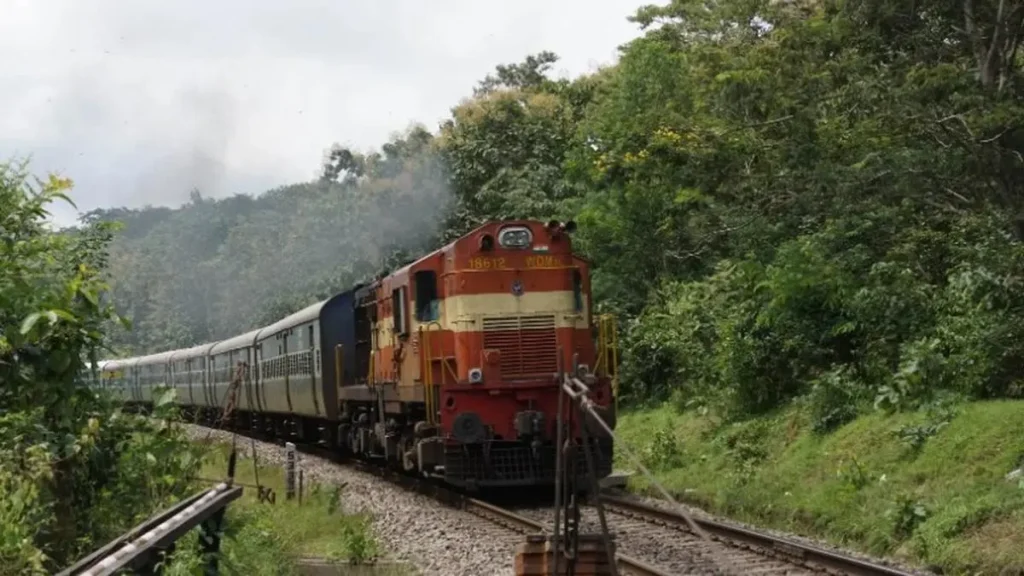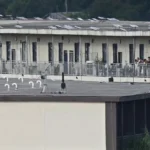
𝗜𝗻𝗱𝗶𝗮 𝘁𝗼 𝗕𝘂𝗶𝗹𝗱 𝟱𝟬𝟬 𝗸𝗺 𝗼𝗳 𝗡𝗲𝘄 𝗥𝗮𝗶𝗹 𝗟𝗶𝗻𝗲𝘀 𝗡𝗲𝗮𝗿 𝗕𝗼𝗿𝗱𝗲𝗿𝘀 𝗪𝗶𝘁𝗵 𝗖𝗵𝗶𝗻𝗮, 𝗠𝘆𝗮𝗻𝗺𝗮𝗿, 𝗮𝗻𝗱 𝗕𝗵𝘂𝘁𝗮𝗻
India is moving ahead with a major railway expansion in its northeastern frontier, aiming to strengthen connectivity, boost logistics, and ensure military preparedness along some of its most sensitive border regions.
According to officials familiar with the matter, the government has approved plans to construct 500 kilometers (310 miles) of new railway lines, including bridges and tunnels, in areas bordering China, Bangladesh, Myanmar, and Bhutan. The project, estimated to cost around US$3.4 billion, is expected to be completed within four years.
Balancing Development and Security
While New Delhi’s ties with Beijing have recently shown signs of improvement, India’s infrastructure strategy remains guided by long-term security concerns. The initiative comes five years after the deadly border clash in Ladakh, underscoring a history of tension despite periodic rapprochement.
The new railways will complement nearly 10,000 kilometers of highways built over the past decade, with another 5,000 kilometers currently under construction. These upgrades are expected to improve civilian access to remote areas while reducing response times in emergencies, whether natural disasters or potential military mobilizations.
Air and Road Links Revived
Alongside railways, India has also reactivated old Advance Landing Grounds (ALGs), first built in 1962, to support helicopter and military aircraft operations in the northeast. Officials say discussions are underway to explore further railway extensions near the disputed border with China in Ladakh.
Prime Minister Narendra Modi’s government has made frontier connectivity a priority, adding 1,450 kilometers of new roads along the Pakistan border and upgrading routes near Doklam — a plateau claimed by both China and Bhutan. Earlier this year, Modi inaugurated the world’s tallest railway bridge, linking the Kashmir Valley with the rest of the country.
A Decade of Northeast Rail Growth
Over the past ten years, India has already laid 1,700 kilometers of rail tracks in the northeast. The latest project builds on that momentum, aimed at reducing troop mobilization time while deepening logistical capacity in the frontier states.
Meanwhile, China has accelerated its own infrastructure drive since the 2017 Doklam standoff, adding dual-use airports and heliports to improve the People’s Liberation Army’s mobility and logistics.
Related posts:
 Policy Dilemmas and Stability: Bangladesh’s Approach to the Arakan Army
Policy Dilemmas and Stability: Bangladesh’s Approach to the Arakan Army
 ASEAN’s Role in Myanmar’s Political Crisis: Diplomacy at a Crossroads
ASEAN’s Role in Myanmar’s Political Crisis: Diplomacy at a Crossroads
 CHINA’S BELT AND ROAD IN SOUTHEAST ASIA: A COMPARATIVE LOOK AT MYANMAR, LAOS, AND CAMBODIA
CHINA’S BELT AND ROAD IN SOUTHEAST ASIA: A COMPARATIVE LOOK AT MYANMAR, LAOS, AND CAMBODIA
 SpaceX Cuts Starlink Access at Myanmar Scam Compounds
SpaceX Cuts Starlink Access at Myanmar Scam Compounds
 China Executes 16 Tied to Myanmar Crime Syndicate
China Executes 16 Tied to Myanmar Crime Syndicate
 U.S. FREEZES $1 BILLION IN MYANMAR GOVERNMENT FUNDS FOLLOWING MILITARY COUP
U.S. FREEZES $1 BILLION IN MYANMAR GOVERNMENT FUNDS FOLLOWING MILITARY COUP
